Frederic Charpentier ©
Thursday, May 29, 2008
Wednesday, May 28, 2008
Tuesday, May 27, 2008
Monday, May 26, 2008
Saturday, May 24, 2008
Friday, May 23, 2008
Thursday, May 22, 2008
Wednesday, May 21, 2008
Cheap Battery from Hong Kong Review
I've been looking to buy a spare battery for my Nikon D300 and knowing that the original Nikon EN-EL3e replacement batteries are anywhere from $40 to $50 a piece, I decided to look into these cheap Chinese battery providers from Ebay. After all I had a pleasant experience with the remote control I bought from Hong Kong.
But before going on Ebay, I went to some forums to see what other photographers had to say about these cheaper options. Some people were very happy with what they got but a few of them were complaining especially those that use the D300.
They were explaining that the generic EN-EL3e batteries were working with their Nikon D200 or D80 but not with their D300. So apparently the problem is that while the D300 takes the EN-EL3e format, it has a chip that can recognize a generic battery and rejects it.
But, but, but, I found there is a company in Hong Kong that makes a generic model that DOES WORK with the D300: It's called "EN-EL3e New Version." Yes, make sure your generic is a "New Version"
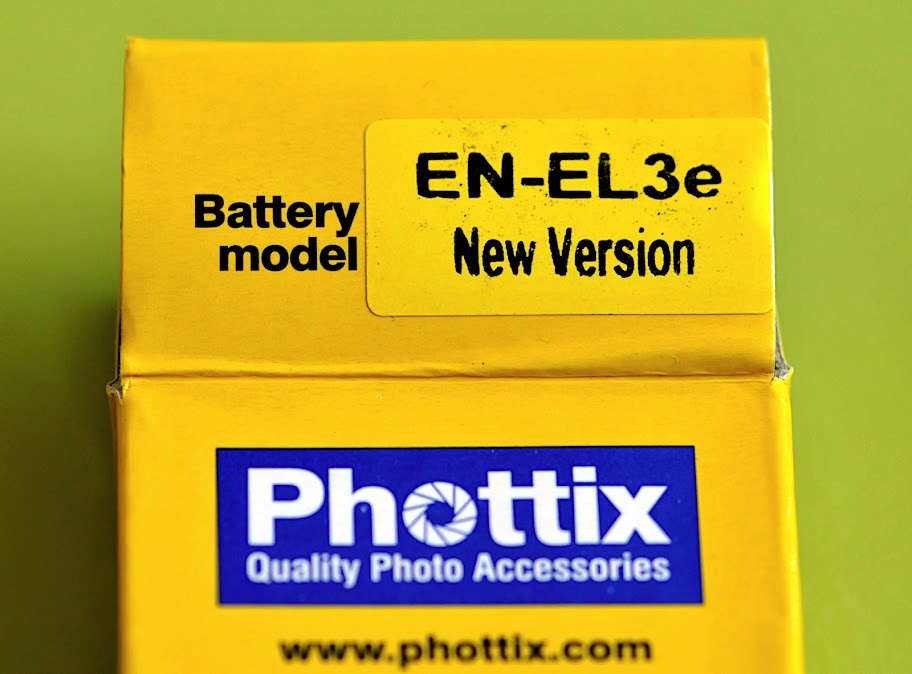
So now I'm on a quest for this "Phottix EN-EL3e New Version". Well, it didn't take me more than five minutes before I found a pack of two batteries for a total of $25.90 shipping included. I wanted to get just one but at this price "what the hell" that's almost half the price of one Nikon Battery.
It took exactly 14 days for the package to arrive in a regular brown envelope with the content bubbled wrapped. If I was into postal-stamps I would keep the stamps too, they're pretty colorful. No?
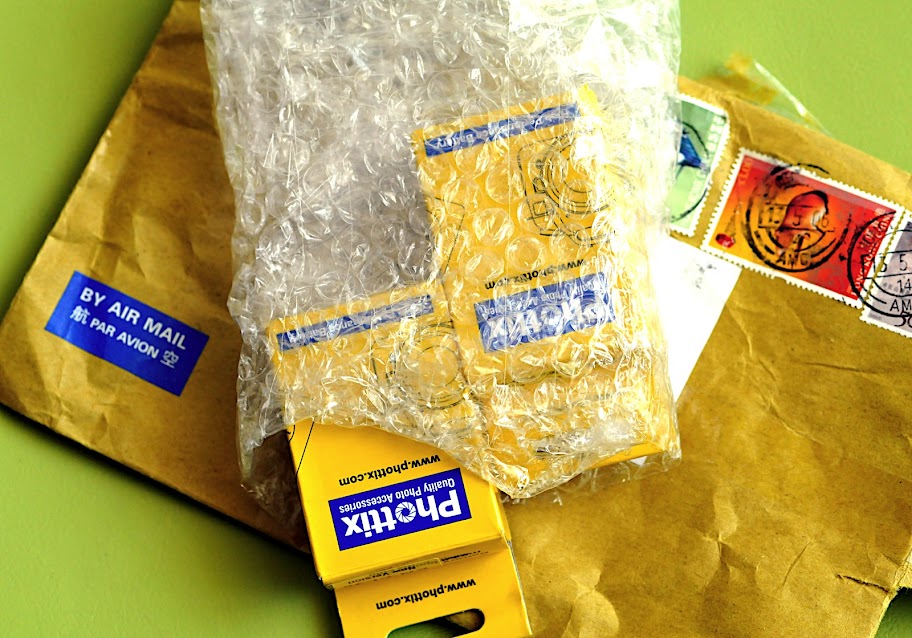
The two boxes look pretty legitimate
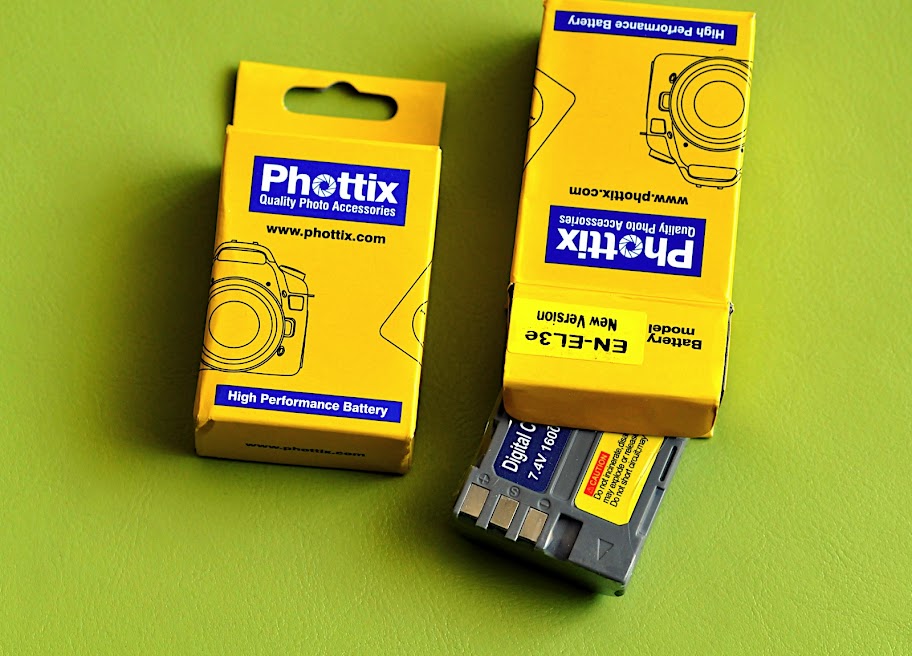
At first the difference with the Nikon is that the Nikon included a plastic cap that can be put back on when it's not in the camera, the generic has just a plastic wrap that just protects it when new. I think the reusable protective cap is a must when you carry it along loose in your bag. I'm gonna have to find a couple of containers to keep them short-circuit.
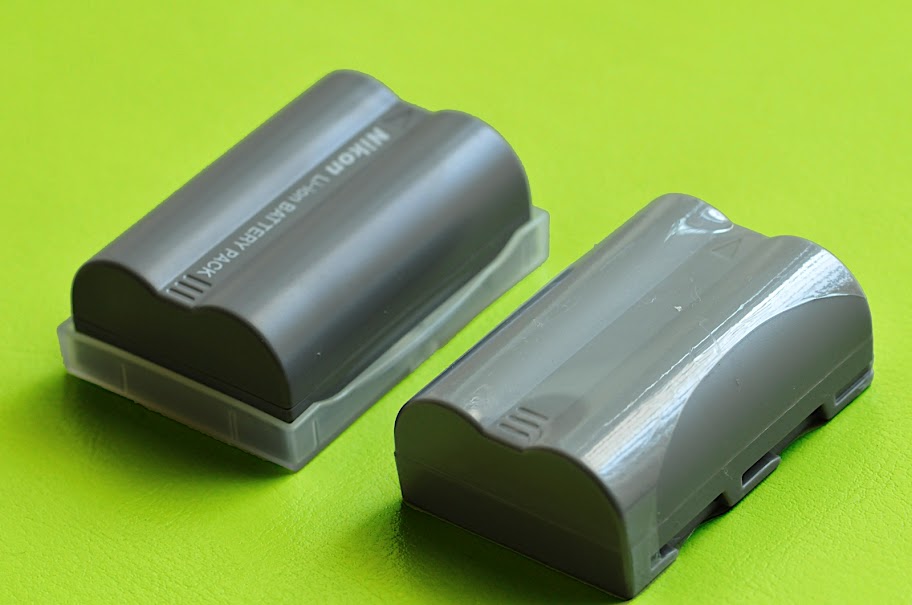
I noticed that the specs were the same except for the Amps. The Nikon says 1500mAh and the Phottix 1600mAh. By the way "mAh" means Milliamp Hour a technical term for how much power a battery will hold. So, if what the generic says is true the battery will last even longer than the original Nikon. How about that !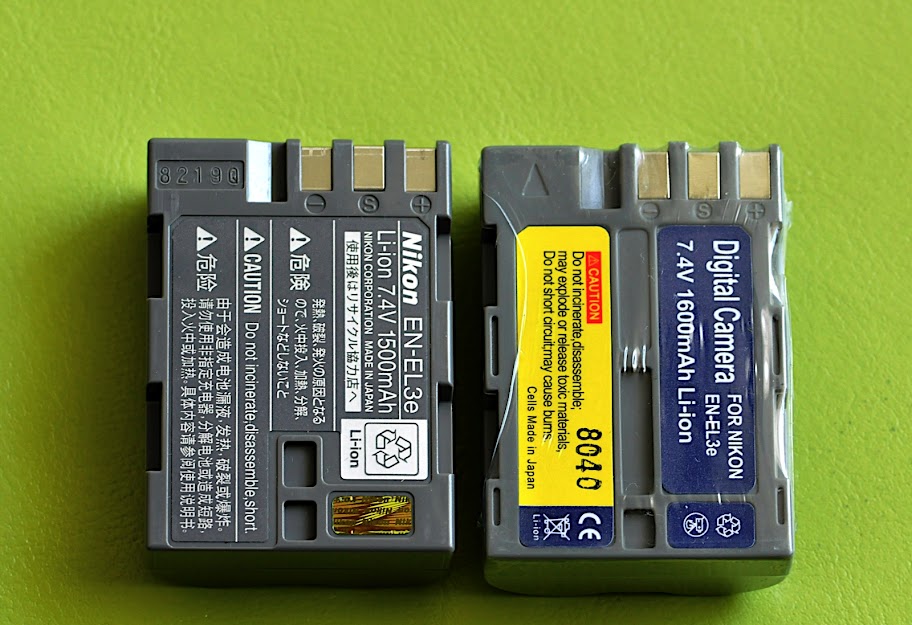
First things first, I charged the battery like the box says. I think it took a couple hours until it was fully charged.
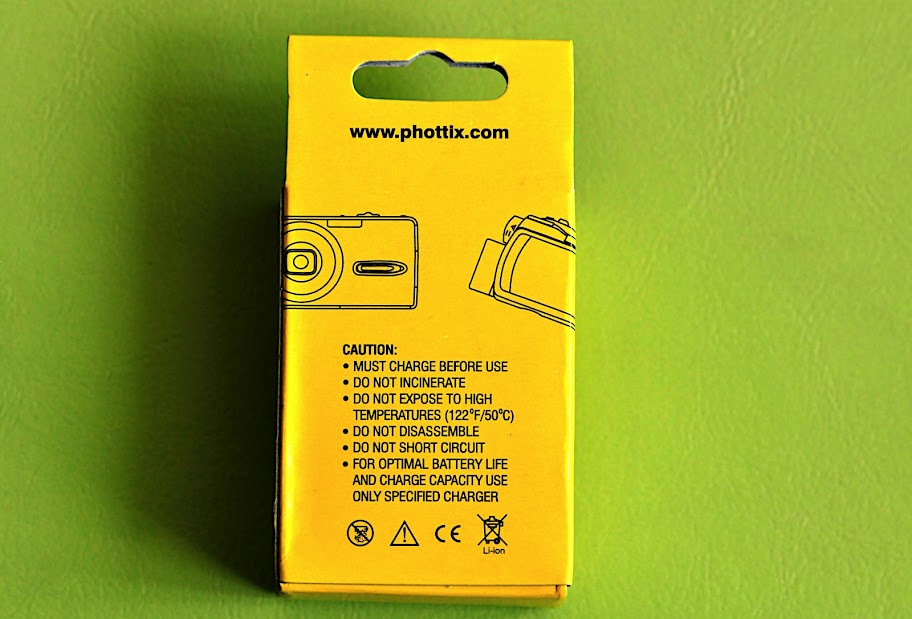
Well after all of that, everything is peachy. The batteries are working flawlessly, the charge seems to hold the same. I don't see any difference in performance between the original and the generic.
CONCLUSION
What can I say? Except for the missing protective cap and the fact that it took 2 weeks for them to arrive. Maybe with time I'll see a difference but at the moment they perform the same.
I'm not crazy about buying stuff from china, after all we hear in the news. I don't like the idea that some poor souls are making my battery for few bucks a day, while other companies are trying to stay in business and paying their employees a fair price.
At that price, I had to experience them myself and share with you my impression. But to tell you the truth. I prefer buying a brand I trust like Nikon, just for the peace of mind.
PROS
Cheap, cheap, cheap...
Perform the same so far (will keep you updated)
CONS
No protective cap
Takes two weeks to get them
The feeling that you are not doing any good for the humanity.
They were explaining that the generic EN-EL3e batteries were working with their Nikon D200 or D80 but not with their D300. So apparently the problem is that while the D300 takes the EN-EL3e format, it has a chip that can recognize a generic battery and rejects it.
But, but, but, I found there is a company in Hong Kong that makes a generic model that DOES WORK with the D300: It's called "EN-EL3e New Version." Yes, make sure your generic is a "New Version"
So now I'm on a quest for this "Phottix EN-EL3e New Version". Well, it didn't take me more than five minutes before I found a pack of two batteries for a total of $25.90 shipping included. I wanted to get just one but at this price "what the hell" that's almost half the price of one Nikon Battery.
It took exactly 14 days for the package to arrive in a regular brown envelope with the content bubbled wrapped. If I was into postal-stamps I would keep the stamps too, they're pretty colorful. No?
The two boxes look pretty legitimate
At first the difference with the Nikon is that the Nikon included a plastic cap that can be put back on when it's not in the camera, the generic has just a plastic wrap that just protects it when new. I think the reusable protective cap is a must when you carry it along loose in your bag. I'm gonna have to find a couple of containers to keep them short-circuit.

I noticed that the specs were the same except for the Amps. The Nikon says 1500mAh and the Phottix 1600mAh. By the way "mAh" means Milliamp Hour a technical term for how much power a battery will hold. So, if what the generic says is true the battery will last even longer than the original Nikon. How about that !
First things first, I charged the battery like the box says. I think it took a couple hours until it was fully charged.
Well after all of that, everything is peachy. The batteries are working flawlessly, the charge seems to hold the same. I don't see any difference in performance between the original and the generic.
CONCLUSION
What can I say? Except for the missing protective cap and the fact that it took 2 weeks for them to arrive. Maybe with time I'll see a difference but at the moment they perform the same.
I'm not crazy about buying stuff from china, after all we hear in the news. I don't like the idea that some poor souls are making my battery for few bucks a day, while other companies are trying to stay in business and paying their employees a fair price.
At that price, I had to experience them myself and share with you my impression. But to tell you the truth. I prefer buying a brand I trust like Nikon, just for the peace of mind.
PROS
Cheap, cheap, cheap...
Perform the same so far (will keep you updated)
CONS
No protective cap
Takes two weeks to get them
The feeling that you are not doing any good for the humanity.
Tuesday, May 20, 2008
Monday, May 19, 2008
Saturday, May 17, 2008
Cheap Wireless Remote Controls: Review
Because I'm shooting more macro these days, I needed a remote trigger release unit that could fit my Nikon D300 and didn't cost an arm and a leg.
The wired remote trigger from Nikon (MC-30) cost $ 80. NEW! So like most of us I tried to find it for less on Ebay and I was willing to even get slightly used in good condition.
To my surprise, what I saw, was a list of wireless remote triggers from Hong Kong with a price range of 20 to 50 US Dollars. What? No, that sounds too good to be true.
I knew that Nikon offer a wireless version (ML-3) but it cost two hundred bucks! It looks pretty good and also has a motion trigger option. I'm sure this option could be very useful for some, but at the moment it's not something I need.
The huge price difference made me very skeptical. And even though I was set on buying a wired version, at these prices, I was willing to give the cheap wireless unit a shot.
So I decided on the unit made by "YoungNuo" (???) and pressed the "buy it now" button, from the ebay store, based in Hong Kong, that has a 99.7% positive feedback rating and the total price was $ 21.80 (shipping included).
I received the package 10 days later in an padded envelope, not the best packaging in the world but the box arrived in good condition.
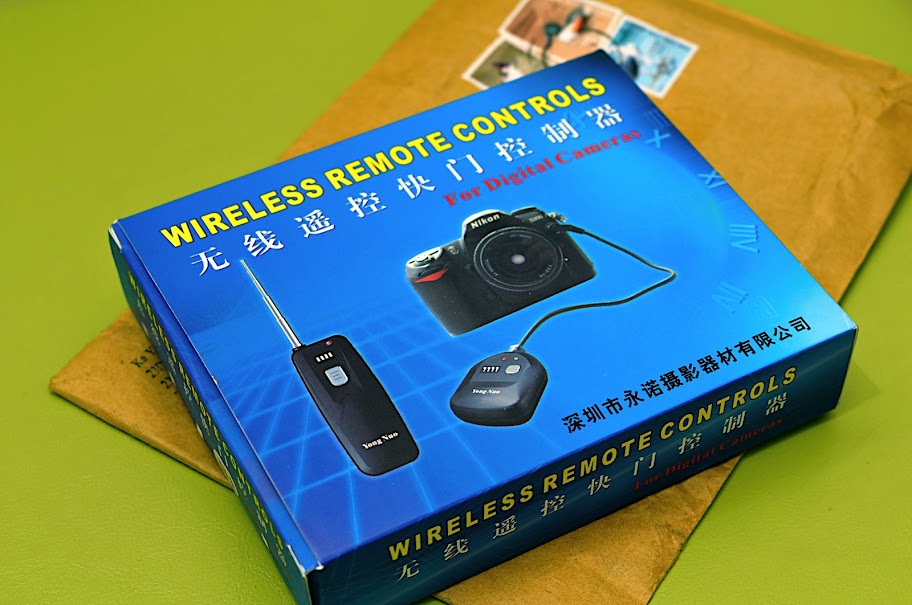
The package included a transmitter, a receiver, a battery and and very clear instructions.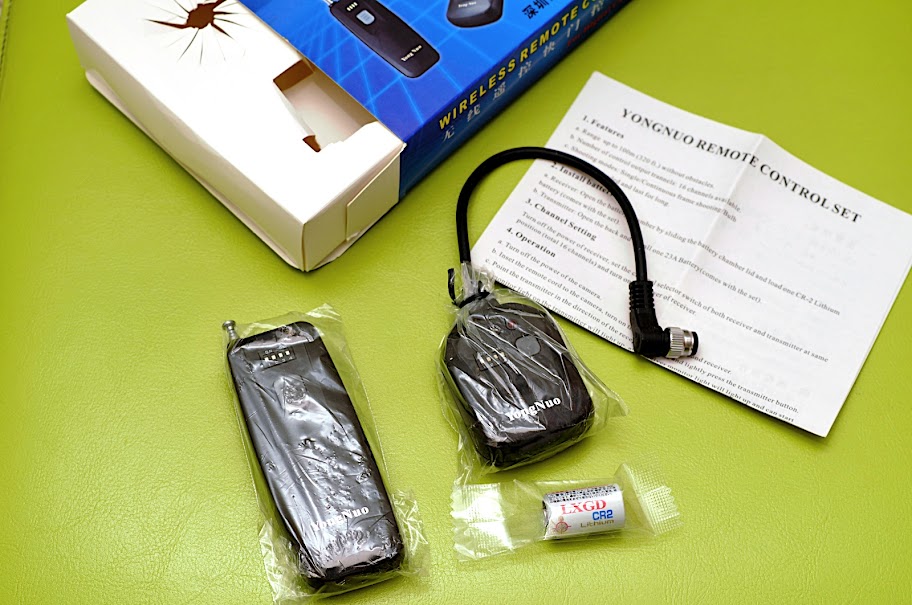
I inserted the battery in the receiver. The Transmitter already had its battery in (ready to work strait out of the box)
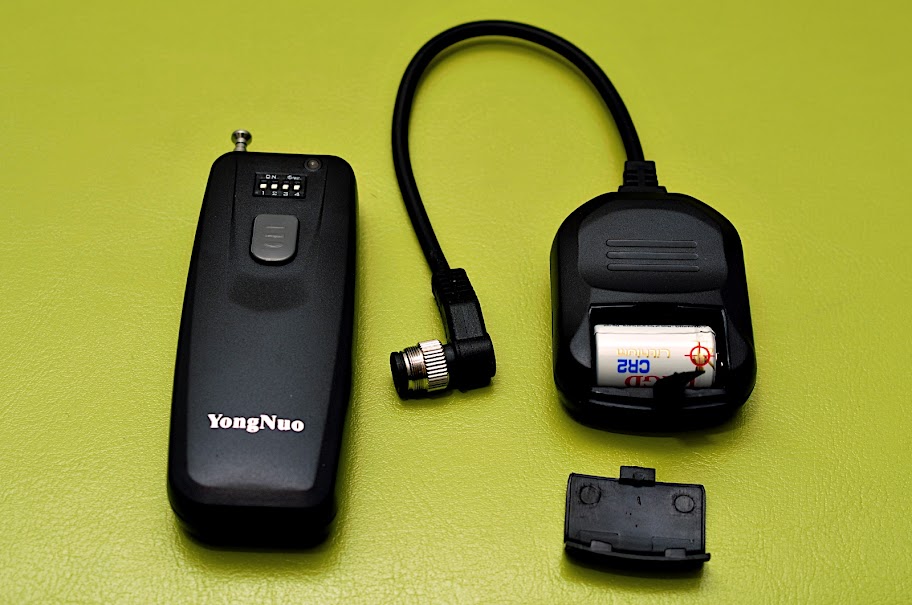
The construction quality has an OK feeling, nothing special but not a cheap - flimsy appearance, it kind of feels like your regular TV remote control. It also has this tacky retractable antenna that looks the same as that old 80's wireless phone antenna. (Personally I'm OK with it).
Before you use it, you have to sync the codes on the receiver and transmitter.
Here you have a choice of 16 different channels. The four little switches need to be reached with the help of a pointy tool like the tip of a ballpoint pen. I think it's a good thing, I was a bit worried that these switches were too exposed to accidental gripping.
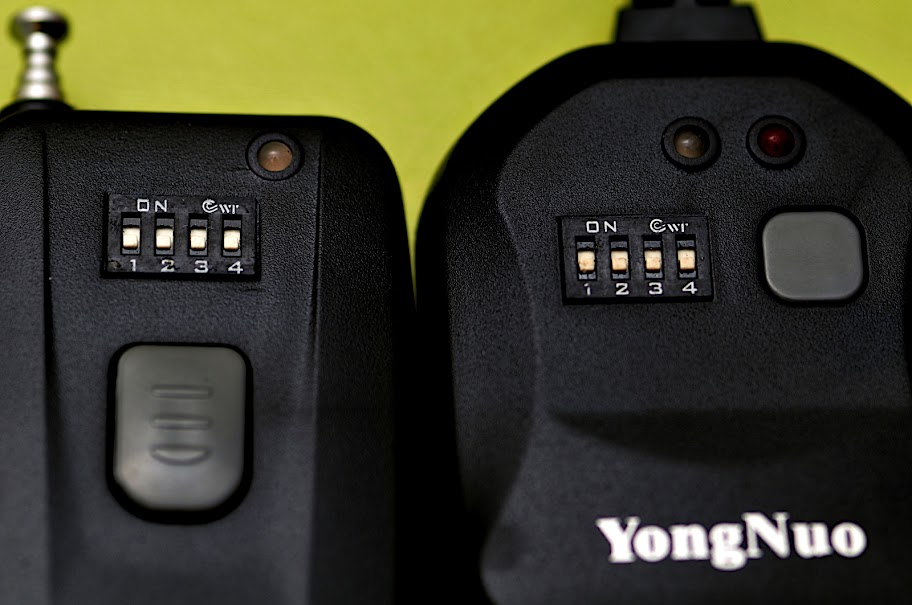
Because the unit is a 10 pins plug compatible with the N90, I decided to experiment first on my old camera, in case the system wasn't perfect and possibly short circuit my D300 electronics (hey you never know).
The plug fits in precisely and the securing ring screws nice and tight with no resistance.
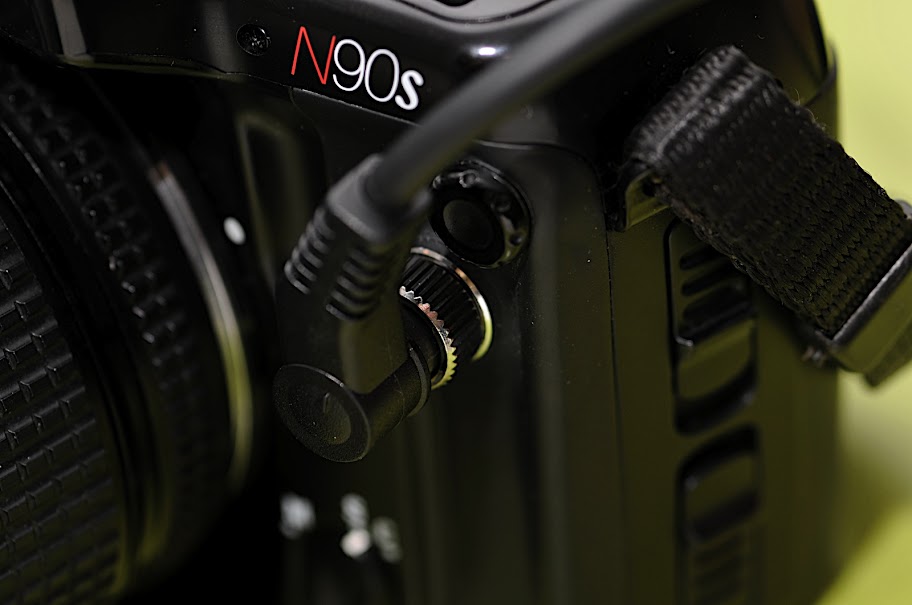
The instructions say to turn off the camera, plug in the receiver cord then turn the camera and the receiver back on . A led light will light up red on the receiver.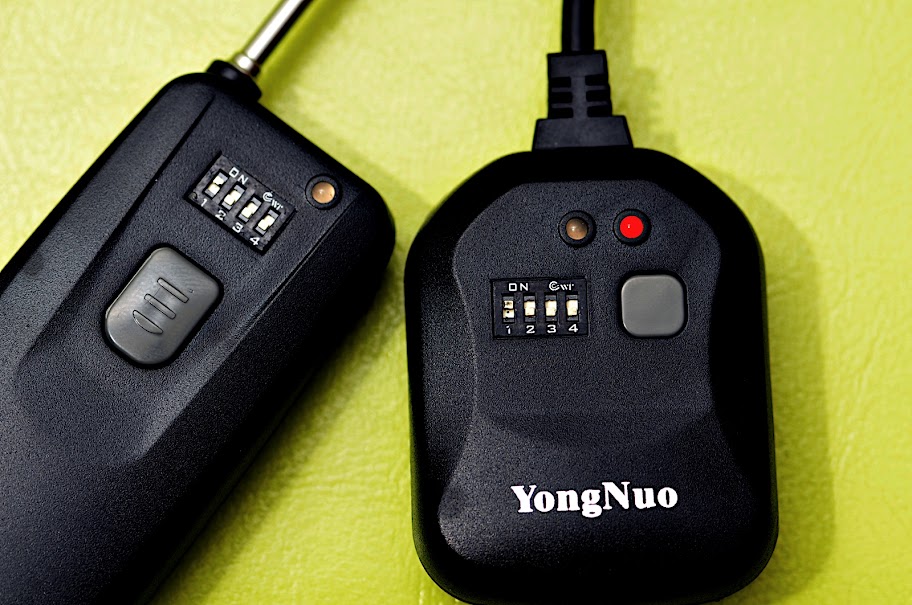
At first you press halfway to activate the autofocus exactly like on your camera. The led light will turn on green on bought units.
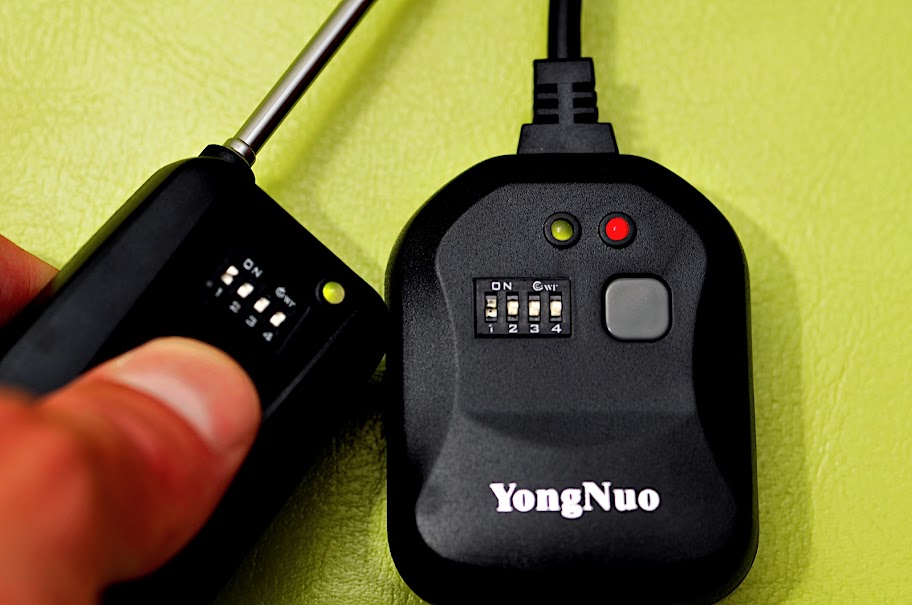
Then press all the way down and the led light will turn red when the camera takes the picture.
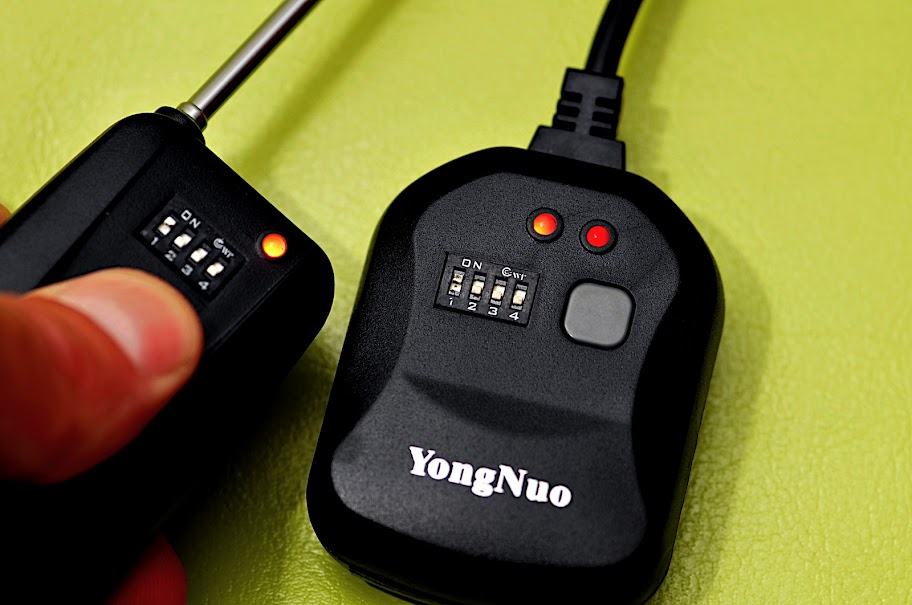
It seems to work perfectly. I didn't feel any delay when I pressed the receiver's button.
I also tried to shout on bulb mode and in continuous shooting mode and everything worked great - just like it's supposed to.The wired remote trigger from Nikon (MC-30) cost $ 80. NEW! So like most of us I tried to find it for less on Ebay and I was willing to even get slightly used in good condition.
To my surprise, what I saw, was a list of wireless remote triggers from Hong Kong with a price range of 20 to 50 US Dollars. What? No, that sounds too good to be true.
I knew that Nikon offer a wireless version (ML-3) but it cost two hundred bucks! It looks pretty good and also has a motion trigger option. I'm sure this option could be very useful for some, but at the moment it's not something I need.
The huge price difference made me very skeptical. And even though I was set on buying a wired version, at these prices, I was willing to give the cheap wireless unit a shot.
So I decided on the unit made by "YoungNuo" (???) and pressed the "buy it now" button, from the ebay store, based in Hong Kong, that has a 99.7% positive feedback rating and the total price was $ 21.80 (shipping included).
I received the package 10 days later in an padded envelope, not the best packaging in the world but the box arrived in good condition.
The package included a transmitter, a receiver, a battery and and very clear instructions.
I inserted the battery in the receiver. The Transmitter already had its battery in (ready to work strait out of the box)
The construction quality has an OK feeling, nothing special but not a cheap - flimsy appearance, it kind of feels like your regular TV remote control. It also has this tacky retractable antenna that looks the same as that old 80's wireless phone antenna. (Personally I'm OK with it).
Before you use it, you have to sync the codes on the receiver and transmitter.
Here you have a choice of 16 different channels. The four little switches need to be reached with the help of a pointy tool like the tip of a ballpoint pen. I think it's a good thing, I was a bit worried that these switches were too exposed to accidental gripping.
Because the unit is a 10 pins plug compatible with the N90, I decided to experiment first on my old camera, in case the system wasn't perfect and possibly short circuit my D300 electronics (hey you never know).
The plug fits in precisely and the securing ring screws nice and tight with no resistance.
The instructions say to turn off the camera, plug in the receiver cord then turn the camera and the receiver back on . A led light will light up red on the receiver.
At first you press halfway to activate the autofocus exactly like on your camera. The led light will turn on green on bought units.
Then press all the way down and the led light will turn red when the camera takes the picture.
It seems to work perfectly. I didn't feel any delay when I pressed the receiver's button.
I don't have a measuring tape that goes 100 feet to see if the working distance is really 100 feet like they claim it would be. But I did test it by walking away from it in my apartment and going to an other room separated by a wall. The system was still working well. I will try it in a field to see how far can I get.
CONCLUSION
Well, I'm very surprised at what I got for twenty bucks! To tell you the truth I was very skeptical. Something this cheap and made in China, famous for the mass manufacturing of toys filed with lead, would work so well. Sure, I don't know if my new remote control is poisoned with lead, but hey, I don't plan on putting it in my mouth anytime soon.
Even as excited as I am to have this unit. I have to admit that if I had 200 dollars to spare I would have bought the Nikon unit instead. Why? Because Nikon is clearly a brand I trust and it's made in Japan, not China. Most importantly, using this cheaper unit is a risk. Should this unit malfunction and damage the circuitry of my camera, my Nikon warranty may not cover it.
I'm really glad it works well and I don't know how long it's going to last but - I've got a good feeling about it and can get on with my work. The risk is worth taking at 20 bucks.
I'll be using it intensely for the next few weeks and will certainly keep you updated how it's going.
PROS
Super cheap
Simple to use
Very light to carry
Comes with batteries
Compatible with the D300
CONS
Old fashion retractable antenna
No case included to keep it together in your bag
Need time for my skepticism to go away
Friday, May 16, 2008
Thursday, May 15, 2008
Wednesday, May 14, 2008
The LensPen first impression (review) !
I was looking at different ways to clean my lens.
Something other than the standard micro fiber tissue. I wanted something small and compact to carry around in my case that works.
Something other than the standard micro fiber tissue. I wanted something small and compact to carry around in my case that works.
So I went on Ebay and typed "cleaning lens kit". Wow! I saw a lot of something called the LensPen. Never heard about it before. I was curious. The LensPen has a brush on one side and uses a "special non-liquid cleaning element, designed to never dry out" to lift dirt from optics including camera lenses, binoculars, telescopes .... It's "dirt cheap" and so I ordered it! For a total of less than ten bucks. I got it in just a few days and well yeah. It looks like a pen. But does it work?
The company claims that the LensPen will NEVER scratch the lens. But I was still a bit skeptical. I'd hate to ruin one of my thousand dollar lenses over an advertising gimmick!
So I took an old lens, I had laying around, and put my big fat fingerprint on it. Following the instructions: I first I pushed out the retractable brush and wiped my lens clean of all the visible dust.
So I took an old lens, I had laying around, and put my big fat fingerprint on it. Following the instructions: I first I pushed out the retractable brush and wiped my lens clean of all the visible dust.
Then I removed the cap from the other end to revel the carbon tip. I gently, wiped the lens with the tip, using a circular motion.
I wasn't convinced. After taking a close look there were still smudges. But continuing to follow the instructions, I breathed lightly on the surface of the lens leaving a little moisture and repeated the process.
It was then that I saw how well this pen works. The lens was truly clean and I got it done in less time and effort than with the messy sprays and other things I've used over the years!
CONCLUSION:
So, my take on this LensPen is that basically, it's a great tool that I will never leave my camera bag. It's great for a quick clean that works and is fast. But I still believe that for the really tough smudges other than finger prints, I will be better off using micro fiber cloths and professional sprays.
It was then that I saw how well this pen works. The lens was truly clean and I got it done in less time and effort than with the messy sprays and other things I've used over the years!
CONCLUSION:
So, my take on this LensPen is that basically, it's a great tool that I will never leave my camera bag. It's great for a quick clean that works and is fast. But I still believe that for the really tough smudges other than finger prints, I will be better off using micro fiber cloths and professional sprays.
PROS
1. Easy to carry
2. Cheap
3. Works fast
4. Seems to be gentle on lenses
5. Love the concept
6. 500 Uses
CONS
1. Not good for big cleaning jobs
2. Has 500 uses, but doesn't tell you when you're running out of uses
1. Easy to carry
2. Cheap
3. Works fast
4. Seems to be gentle on lenses
5. Love the concept
6. 500 Uses
CONS
1. Not good for big cleaning jobs
2. Has 500 uses, but doesn't tell you when you're running out of uses
Subscribe to:
Posts (Atom)







